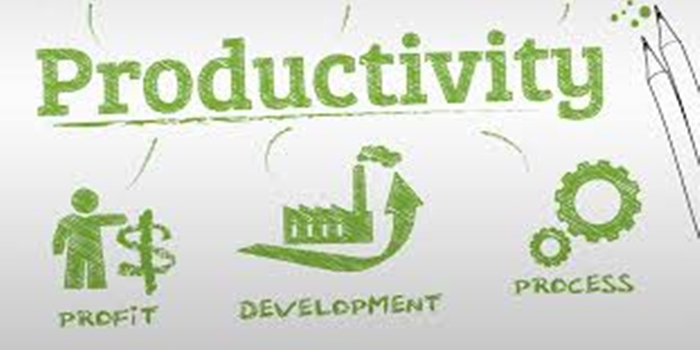In this article, we discussed the meaning of productivity and organization, the example, the features, and we also talked about the benefits.
Definition
Productivity in an organization refers to the efficient use of resources (like time, labor, and materials) to achieve desired outputs (products, services, or goals). Organization, on the other hand, refers to the structured arrangement and coordination of people, resources, and processes to achieve a common purpose or objective.
Productivity and Organization are Intertwined, and numerous Examples:
Goal Setting:
Setting clear and measurable goals for both individuals and teams can drive productivity and ensure everyone is working towards the same objectives.
Time Management:
Effective time management techniques, such as the Pomodoro Technique or prioritizing tasks, can help individuals focus on high-priority work and minimize distractions.
Automation:
Automating routine tasks can free up employees’ time and resources to focus on more strategic work, ultimately increasing productivity.
Focus on Engagement:
Engaged employees tend to be more productive, so fostering a positive work environment and providing opportunities for growth and development can improve overall performance.
Productivity Tools:
Utilizing project management software, time tracking apps, and other tools can streamline workflows and enhance productivity.
Measuring Productivity:
Tracking metrics like revenue per employee, customer satisfaction, or units produced can provide valuable insights into productivity levels and identify areas for improvement.
Examples of Organization:
Digital File Organization:
Implementing a consistent file-naming structure and organizing files into folders can improve efficiency and make it easier to locate information.
Electronic Scheduling:
Using electronic scheduling systems for appointments and meetings ensures everyone is aware of upcoming commitments and helps avoid scheduling conflicts.
Workflow Charts:
Visualizing project workflows with charts can help clarify responsibilities, identify bottlenecks, and optimize processes.
Desk Organizers:
Keeping a clean and organized workspace can minimize distractions and improve focus, contributing to greater productivity.
Communication:
Clear and consistent communication within a team can prevent misunderstandings and ensure everyone is on the same page, which is crucial for both productivity and organization.
Organizational Policies and Procedures:
Establishing clear policies and procedures for various aspects of work, such as time off or expense reporting, can streamline operations and ensure consistency.
Productivity in an organization :
Individual Features:
Time Management: Effectively managing time to prioritize tasks and meet deadlines.
Task Management: Collecting, organizing, and managing tasks to be completed.
Focus: Reducing distractions and staying focused on the task at hand.
Prioritization: Determining which tasks are most important and should be tackled first.
Organizational Features:
Collaboration: Enabling effective teamwork and communication.
Project Management: Organizing and managing projects efficiently.
Improved Employee Satisfaction: Fostering a positive and engaged work environment.
Better Communication: Facilitating clear and effective communication between team members.
Automation: Automating repetitive tasks to free up time and resources.
Data Security: Protecting sensitive information and maintaining data integrity.
Productivity Analysis Tools: Using tools to measure and improve productivity.
Specific Benefits for productivity and Organization:
For Individuals:
Increased Efficiency and Time Management:
Organization allows for better allocation of time and resources, enabling individuals to accomplish more with less effort and time.
Reduced Stress and Anxiety:
Knowing what needs to be done and having a plan in place can alleviate the anxiety associated with feeling disorganized and overwhelmed.
Improved Well-being:
Productivity can lead to a more fulfilling work-life balance, allowing for more time for hobbies, relaxation, and personal goals.
Enhanced Focus and Concentration:
Organization minimizes distractions, allowing individuals to focus on tasks at hand and improve concentration.
Increased Sense of Accomplishment and Motivation:
Successfully completing tasks and achieving goals can boost self-esteem and motivation.
For Businesses:
Increased Profitability:
Productivity improvements can lead to higher output, reduced costs, and increased revenue.
Improved Customer Service:
Efficient operations and faster turnaround times can result in happier customers.
Stronger Competitive Advantage:
Businesses that are more productive and organized can better compete in the market.
Enhanced Employee Morale and Engagement:
A positive and productive work environment can lead to higher employee satisfaction and engagement.
Reduced Costs:
Increased productivity and efficiency can reduce operational expenses and improve resource utilization.
Improved Quality:
A focus on productivity often translates to higher quality work and products.
Innovation and Creativity:
A productive work environment can foster a culture of innovation and creativity.
Attracting and Retaining Talent:
A positive and productive workplace is more attractive to potential employees and helps retain existing talent.
Business Resilience:
Productivity can help businesses adapt to changing market conditions and withstand economic downturns.
Conclusion
Productivity refers to the efficiency with which resources are used to achieve desired outcomes, while organization is the process of structuring and coordinating activities to achieve goals. In essence, productivity measures how much output is produced with a given amount of input, while organization focuses on how resources are arranged and managed to facilitate that production..


